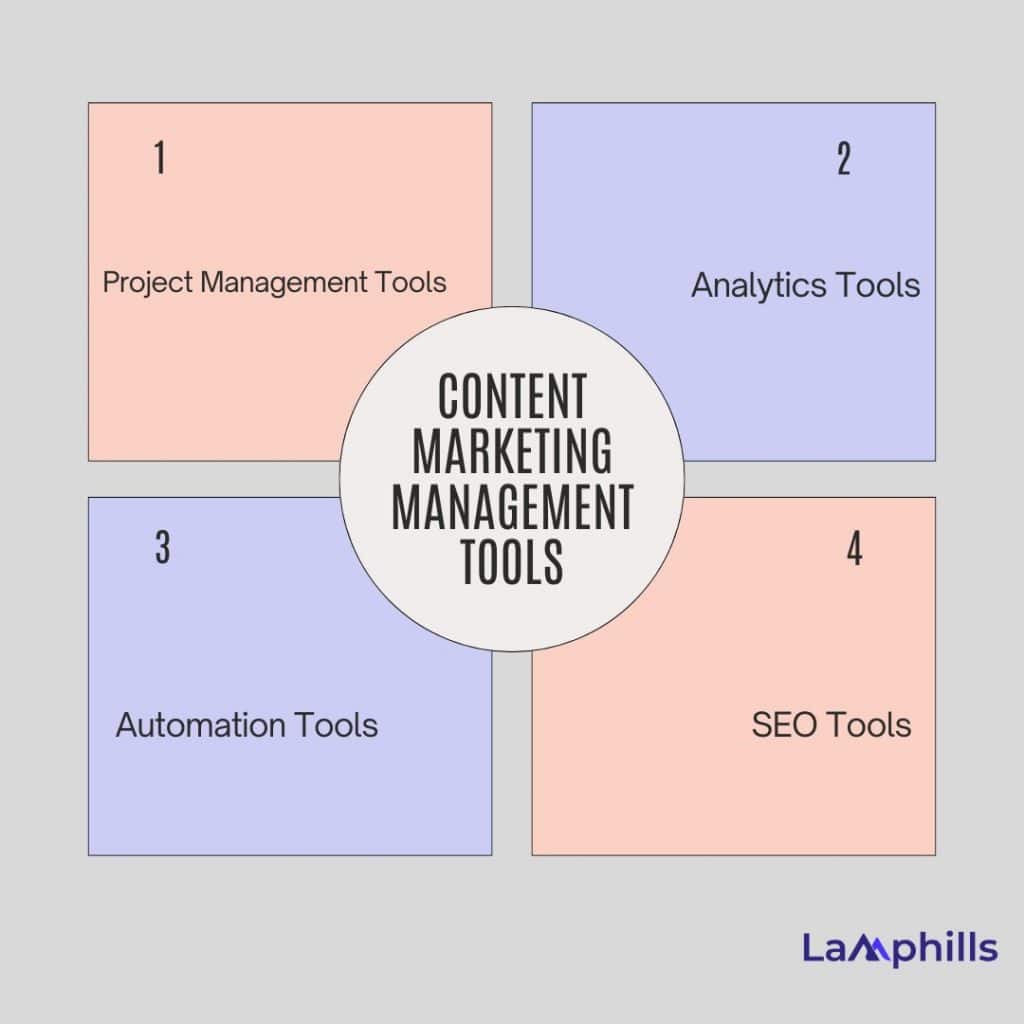Given its potent ability to generate leads and increase income, it is not surprising that 95% of companies with established marketing campaigns also use content marketing. I was thrilled to start content marketing because I wanted to provide my audience with useful content, but I soon discovered that managing content well was more difficult than simply writing high-quality content. As I needed more content, I needed a good plan to scale without sacrificing quality. As time went on, I created a content marketing management system that made it easier for me to use the appropriate tools, keep organized, and streamline my efforts. In this article, I’ll discuss my experience using the best system template strategy tools to scale my content marketing.
Key Points
- The goal of content marketing is to produce and circulate useful material that draws in new clients by offering them knowledge or other content that captures their interest.
- Develop personas and conduct research to modify content to meet audience needs.
- To improve visibility, give top priority to content and search engine optimization.
- Use analytics to monitor and enhance performance and promote content on many channels.
- To achieve the best content marketing management, make a content calendar to plan and schedule relevant and consistent content.
Overview
Content marketing management is the oversight and planning of a variety of digital marketing activities, including email marketing, social media management, content marketing planning, content production (blogs, white papers, videos, and more), and any other digital content that supports an organization’s inbound marketing strategy. By creating and circulating useful articles, films, podcasts, and other material, content marketers hope to draw in, hold on to, and expand their audience. This approach keeps your business at the top of consumers’ minds, develops knowledge, and raises brand awareness when it comes time to buy what you sell.
The goal of content marketing is to produce and circulate useful material that draws in new clients by offering them knowledge or other content that captures their interest. It takes a combination of management skills and the right marketing technologies to arrange these diverse assets and guarantee timely content creation.
Although content marketing is already useful by a lot of creative agencies, their efforts aren’t as well-organized as they could be. An overall strategy and a system for planning and managing assets may be the missing component. That is the management of content marketing. Having spent years navigating every aspect of content marketing, I can attest to the importance of effectively managing content in addition to producing it. My workload increased, and I initially believed that I would never be able to produce consistently high-quality content. However, with the correct tools, methods, and tactics, I was able to scale without compromising quality.
Content Marketing Management System
Content has emerged as one of the primary means by which companies engage with prospective clients as they move through the sales funnel. To consistently and effectively create, manage, update, and distribute information, a content management system is required for content marketing to provide leads. Businesses may handle digital information more easily with a content management system (CMS). These platforms allow entire teams to produce, modify, arrange, and circulate material. It serves as one central location for material and offers automated procedures for team-based digital content production and administration using pre-existing (or custom) workflows. Roles determine the privileges and duties that are granted to persons.
Also Read: What is Content Marketing ROI And How to Measure Your Success?
A content management system (CMS) enables you to create and maintain websites and their content with no technical overhead, allowing you to focus on creating great content rather than managing projects or traffic. A CMS gives companies the ability to share and regulate their content without the need to employ a full-time content development team by providing a straightforward and reasonably priced content management system. I handled stuff in a pretty disorganized manner at first. I felt like I was constantly chasing after the next deadline since I used different tools for content creation, planning, and tracking. However, I then understood that to tie everything together, I needed a central content marketing management system (CMS).
I selected a CMS that allowed me to manage all of my content planning, task delegation, deadline tracking, and performance data in one location. The system revolutionized my productivity and helped me stay focused and organized by providing a comprehensive overview of all my content projects. Working with editors and freelancers was made simple by my CMS’s collaboration tools, which prevented me from becoming lost in an infinite number of emails and document modifications. Using this method was the first significant step I took to scale my content marketing efforts without sacrificing quality.
Content Marketing Management Tools
After putting a strong CMS in place, I saw that I needed more tools to help me handle every aspect of content production and distribution. To make sure that every piece of material I created was properly optimized and delivered on schedule, these tools proved indispensable. The management tools for content marketing are as follows:
#1. Project Management Tools
I started by implementing a project management tool into my process. I used spreadsheets to keep track of my tasks in the past, but this was ineffective and prone to mistakes. Large content projects might be divided into smaller tasks, deadlines could be defined, and team members could be assigned duties by using a project management tool. This allowed me to monitor each content piece’s development from beginning to end and made sure that no stage in the process was missed.
#2. Analytics Tools
Making decisions based on data was essential to scaling effectively. I could keep an eye on my content’s performance in real-time with analytics tools. These resources gave me information on engagement, bounce rates, and conversions, as well as helped me identify the kinds of material that connected with my audience. With the use of this information, I improved my content strategy by concentrating on the subjects and forms that produced the greatest outcomes.
#3. Automation Tools
I became aware of how crucial it was to automate regular tasks as I scaled. Automation technologies enabled me to publish blog content at scheduled times, send out email newsletters, and plan social media postings. This made sure that my content was consistently seen by my audience and freed me my time to concentrate on strategy and creativity.
#4. SEO Tools
To scale my material without compromising quality, SEO tools were essential. I researched keywords, examined rivals, and search engines optimized my content using these tools. This made it possible for me to make sure that every piece of content was both well-written and positioned to draw in natural traffic. I eventually realized that minor SEO improvements could have a significant effect on my content’s success and visibility.

Content Marketing Management Template
I required a dependable framework to optimize my productivity as my content production process grew more complex. At that point, I created a framework for managing content marketing. This template turned become a key component of my content marketing plan. It guaranteed that I didn’t overlook any crucial phases in the procedure and also saved me time. I was able to grow while keeping my content’s quality and tone constant thanks to this consistent technique. Every piece of material I created was guided step-by-step by this template, which made sure that all of them were of the same grade. There were sections in the template for:
- SEO Optimization: A checklist for researching keywords, creating meta descriptions, and following SEO best practices.
- Content Ideation: A location to do competitor analysis, audience research, and idea generation.
- Performance Tracking: A section to examine each content piece’s performance, including conversions and interaction.
- Content Creation: Each piece’s goal, target audience, and tone of voice were described in a thorough content brief.
- Distribution Strategy: A strategy for distributing the content via email and social media, among other means.
How to Increase the Volume of Your Content Marketing Without Degrading Quality
Though difficult, scaling content marketing is possible with careful planning. To do it, follow these steps:
#1. Recognize Client Objectives
I always begin by figuring out the primary objectives of my clients, such as increasing brand recognition or lead generation. This makes it easier for me to provide content that directly supports their corporate goals.
#2. Assigning and Cooperation
I eventually concluded that I couldn’t manage all of the content production by myself. However, I began collaborating with content companies and freelance writers who could manage particular tasks. I did not, however, simply assign jobs without supervision. To make sure that every piece of content they created fulfilled my quality requirements, I established explicit guidelines and expectations. This made it possible for me to increase the volume of content I produced while keeping a high standard of quality.
#3. Content Repurposing
Reusing content was another tactic that enabled me to grow without having to start from scratch. Rather than regularly generating fresh blog entries, I examined my current material and searched for methods to recycle it. A blog post may develop into a podcast episode, infographic, or video script. By repurposing material, I was able to give my audience value across many media and prolong the life of my best-performing work.
#4. Observe and Modify
I monitor performance after release to determine what works. I continuously improve the approach by adjusting the plan in response to data and feedback.
#5. Putting in Place a Quality Control Procedure
I refused to sacrifice quality even as I scaled. To make sure that every article was checked for grammar, SEO, and brand alignment before publication, I established a strict content approval procedure. As my output expanded, this quality control method made sure that my audience continued to receive the same amount of value and became an essential component of my content strategy.
#6. Automation and Personalization in Balance
I was able to save time by using automation techniques, but I was careful to preserve the personal touch that gave my work its distinctive character. I continued to be hands-on when it came to creating content and interacting with my audience, even while I automated processes like email delivery and social media scheduling. Finding a balance between personalized and automation was essential to growing my work without sacrificing quality.
The Roles Involved in Content Marketing Management
It takes a group of specialist positions, each of which contributes to a distinct part of the process, to handle content marketing effectively. Initially, I attempted to handle everything on my own when I started content marketing. As things expanded, I came to see how crucial each position was to expanding my work. Managing and scaling my content marketing efforts without compromising quality was made easier by each of these positions. The following are some roles of The Roles in content marketing management I discovered I could rely on:
- SEO Specialist: To increase organic traffic, search engine optimization of content became crucial. With the help of an SEO specialist, my material began to rank higher.
- Content Editor: Before publishing, the information was refined by editors to make sure it was professional, consistent, and understandable.
- Project Manager: It was essential to coordinate the crew and monitor deadlines, and a project manager kept things moving forward.
- Content Marketing Manager: Managing deadlines, keeping an eye on the overall plan, and making sure it was in line with corporate objectives were all my responsibilities.
- Content Strategist: I was able to plan content that met my audience’s demands and my company goals thanks to this role.
Also Read: 12+ Creative Content Ideas for Social Media to Keep Your Followers Engaged
- Content Creators: My ideas were realized through the efforts of writers, videographers, and designers. Their varied backgrounds guaranteed excellent content in a variety of forms.
- Social Media Manager: Effective content distribution was crucial, I discovered, and a social media manager ensured that my material was seen by the appropriate people.
- Content Curator: Sharing outside material allowed me to give my audience insightful viewpoints in addition to my own.
- Specialist in Email Marketing: This position was essential in enabling me to send targeted email campaigns to my audience directly.
- Analytics Expert: To make data-driven judgments about what content to prioritize, they assisted me in monitoring performance.
Why successful management of content marketing is so important
To guarantee that content is not only produced but also supplied efficiently, regularly, and purposefully, good content marketing management is essential. The foundation of any successful content strategy is, in essence, effective content marketing management, which aids companies in expanding, interacting with, and retaining a devoted audience. The reasons it is essential are as follows:
#1. Participation of the Audience
Consistent, relevant, and high-quality material keeps your audience interested in your marketing efforts. It enables you to sustain a strong brand presence and promptly respond to the needs of your audience.
#2. Data-Informed Decision Making
A crucial part of managing content marketing is using analytics to track results. Knowing what works and what doesn’t will help you make better decisions, enhance your approach, and increase the impact of your material.
#3. Effectiveness and Organization
Effective management makes the entire process of creating content more efficient. It facilitates the planning, scheduling, and tracking of material, guaranteeing that the workload is manageable and deadlines are fulfilled. In the absence of a structure, overseeing several content projects becomes disorganized and ineffective.
#4. Sustaining Quality
The quality of content can easily decline as output rises. Every piece of content must go through a systematic process from conception to final approval, which is ensured by effective content management, guaranteeing that high standards are always fulfilled.
#5. Growing Without Disorder
You can scale effectively as your content demands increase without sacrificing consistency, quality, or deadline control thanks to management tools and processes.
The Best Ways to Run a Successful Content Marketing Strategy
You may design and carry out an effective content marketing strategy that produces outcomes and forges enduring bonds with your audience by adhering to these best practices. Some suggested approaches are as follows:
#1. Clearly define your objectives
Prioritize setting specific, measurable objectives first. Setting clear goals for the campaign helps direct its whole course, whether that goal is to increase interaction, generate leads, or increase traffic.
#2. Identify Your Audience
Investigate your target market in depth. To better understand their interests, habits, and pain spots, create personas. Specifically address their requirements with the content you provide.
#3. Establish a Calendar for Content
Organizing is essential. Throughout the campaign, make sure that the subjects, formats, and posting schedule are consistent by creating a content calendar.
#4. Put Quality Content
Quality is always superior to quantity. Make sure the information you provide is useful, interesting, and informative. Trust is built and audience loyalty is maintained via quality content.
#5. Make yourself SEO-friendly
Research keywords and make sure your material is search engine optimized. Because SEO raises your content’s ranking, it becomes easier for users to discover it naturally.
#6. Connect to Your Audience
Answer questions, comments, and criticism. Developing a relationship with your audience boosts their loyalty and promotes sharing, which broadens the reach of your campaign.
#7. Repurpose Content That Performs Well
Make your finest content last longer by adding fresh information or repurposing it in multiple formats. As a result, your efforts provide more results.
#8. Employ a Variety of Formats
Use a variety of media to diversify your material, such as podcasts, infographics, videos, and blogs. This helps you reach people who have various tastes in content and keeps your audience interested.
#9. Make Your Content Visible
Don’t depend just on organic reach. To increase visibility and interaction, promote your content on a variety of venues, including social media, email, and even paid advertisements.
#10. Monitor Results
Use analytics software to monitor results. To determine what is effective, monitor metrics such as traffic, engagement, and conversions. Then, modify your approach accordingly.
Also Read: A Beginner’s Guide to Content Marketing KPIs and Metrics
What is content marketing management?
The planning, production, distribution, and analysis of information to accomplish particular marketing objectives is referred to as content marketing management. Guarantee that content is constantly of the highest quality, useful to the intended audience, and in line with the ultimate business goals, it entails managing the complete content lifecycle, from idea to implementation. Managing processes for content development, organizing teams, maximizing productivity with tools and technologies, and monitoring performance indicators to adjust tactics are all part of this process.
What are the 5 Ps of content marketing?
The approach is guided by the five Ps of content marketing, which guarantee successful execution:
#1. Plan
This entails investigating and creating a content strategy according to audience demands and corporate objectives. Setting goals, determining key messages, and creating content schedules are all part of it.
#2. Produce
Whether it’s blog entries, videos, infographics, or podcasts, the real content production takes place. To accomplish the strategic objectives and connect with the intended audience, the material should be customized.
#3. Publish
Following content creation, it’s important to post it on the proper channels, such as a business website, social media, or other channels of distribution.
#4. Promote
It’s not enough to just publish stuff. Promoting content using SEO, social media, email marketing, and paid ads guarantees that the intended audience will see it.
#5. Perform
Metrics like interaction, traffic, and conversions are crucial for monitoring the content’s effectiveness after it has been published and promoted. This aids in future strategy refinement.
What is the role of content management?
Content management is crucial for efficiently managing, organizing, and circulating content across numerous channels. It guarantees that the process of creating material is orderly and controllable, avoiding confusion and repetition. Using tools, processes, and systems to store, arrange, and retrieve content is known as content management. It ensures that content is in line with the goals and voice of the brand by assisting in maintaining stability in tone, style, and quality throughout all content initiatives. It also facilitates the expansion of content production without compromising quality.
Conclusion
Managing content marketing involves more than just providing content; it also entails setting up procedures, employing the appropriate tools, and developing systems that let you grow without sacrificing quality. Using efficient technologies, creating a streamlined template, and establishing a strong content marketing management system have allowed me to scale my content marketing efforts while continuously producing top-notch content. My experience has shown me that growing doesn’t have to mean compromising quality; you can expand your content marketing in a way that is both impactful and sustainable if you have the correct tactics in place.
Related Articles
- Your Ultimate Guide to Effective Stakeholder Management: Best Practices
- How to Create an Effective Event Marketing Plan: Step-by-Step Guide
- A Simple Guide to Effective Content Marketing Automation: Tools, Tips and Templates
- Everything You Need to Know About Content Marketing Tools (Plus Best Picks)
- How to Become a Content Marketing Strategist in Nigeria 2024






